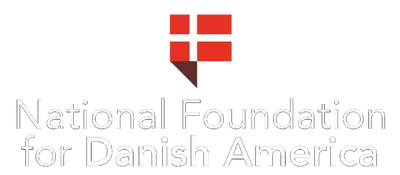
1000 - 1600's
1000 - Around the year 1000 AD, Norse Vikings established temporary settlements in areas such as Newfoundland (Canada) and parts of Greenland. The most famous Norse settlement in North America is L'Anse aux Meadows in Newfoundland, which was discovered and excavated by archaeologists in the 1960s.
1619 - Danish explorer Jens Munk (1579-1628) reaches Hudson Bay while searching for Northwest passage.
1636 - Earliest documented Danish immigrants to the new world, Jan Jensen and his wife Engeltje, arrive with their children in the Dutch colony of New Amsterdam.
1650 - By the mid 17th century, many individual Danes reach North America. It is believed approximately 50 percent of the 1,000 people living in the Dutch colony of New Netherlands (later New York ) were Danes.
1666 - Danish West Indies Company takes possession of island of St Thomas in the Caribbean. Two nearby islands eventually come under Danish control, St. John in 1717 and St. Croix in 1733.
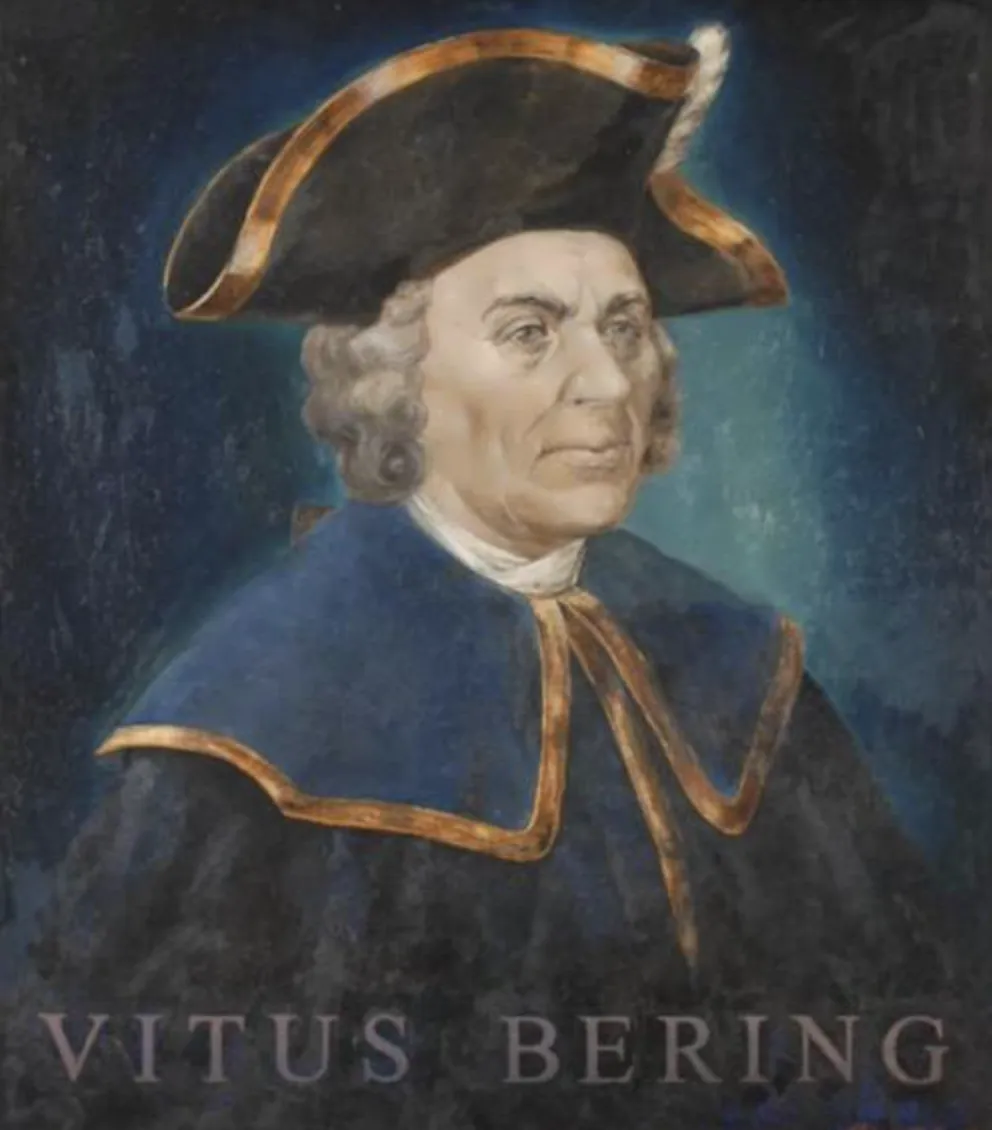
1700's
1721 - Denmark begins colonization of Greenland. Full colonization established in 1776.
1728 - Danish explorer Vitus Jonassen Bering (1681-1741), discovered that a narrow body of water separated the North American and Asian continents. Today this strait is named the Bering Sea in his honor.
1750 - After the mid 18th century, several Danish families who were members of a religious denomination called the Moravian Brethren immigrated to Pennsylvania where they settled among German Moravians in the Bethlehem area.
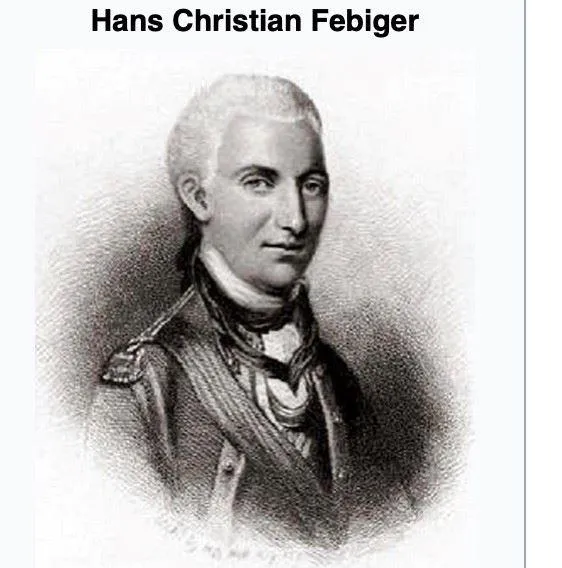
1776 - Approximately one thousand Danish settlers participate in the American Revolutionary War including commander Hans Christian Febiger who serves as a trusted advisor to General George Washington. Febiger, born in Faaborg, Denmark in 1749 was known as “Old Denmark” and also served as the Treasurer of Pennsylvania from 1789 until his death seven years later.
1780 - Under the leadership of Catherine the Great of Russia, the League of Armed Neutrality is formed to protect European shipping threatened by Great Britain during the American Revolutionary War. Denmark, Sweden, Prussia and Austria were the first countries to join the pact.
1792 - Denmark recognized the United States and consular relations were established on or about June 9, 1792 when the U.S. consul at Copenhagen, Hans Saabye, received an exequatur (official diplomatic recognition) from the Danish government on or about June 9, 1792.
1792 - Denmark becomes the first country to abolish the slave trade in overseas possessions. Although the transport of slaves did not end until 1803. Approximately 120,000 people from present-day Ghana had been brought to the Danish West Indies (now the United States Virgin Islands) to plant and harvest sugar cane. The emancipation of slaves on the Danish West Indies occurred in 1848, and the former plantation economy collapsed.
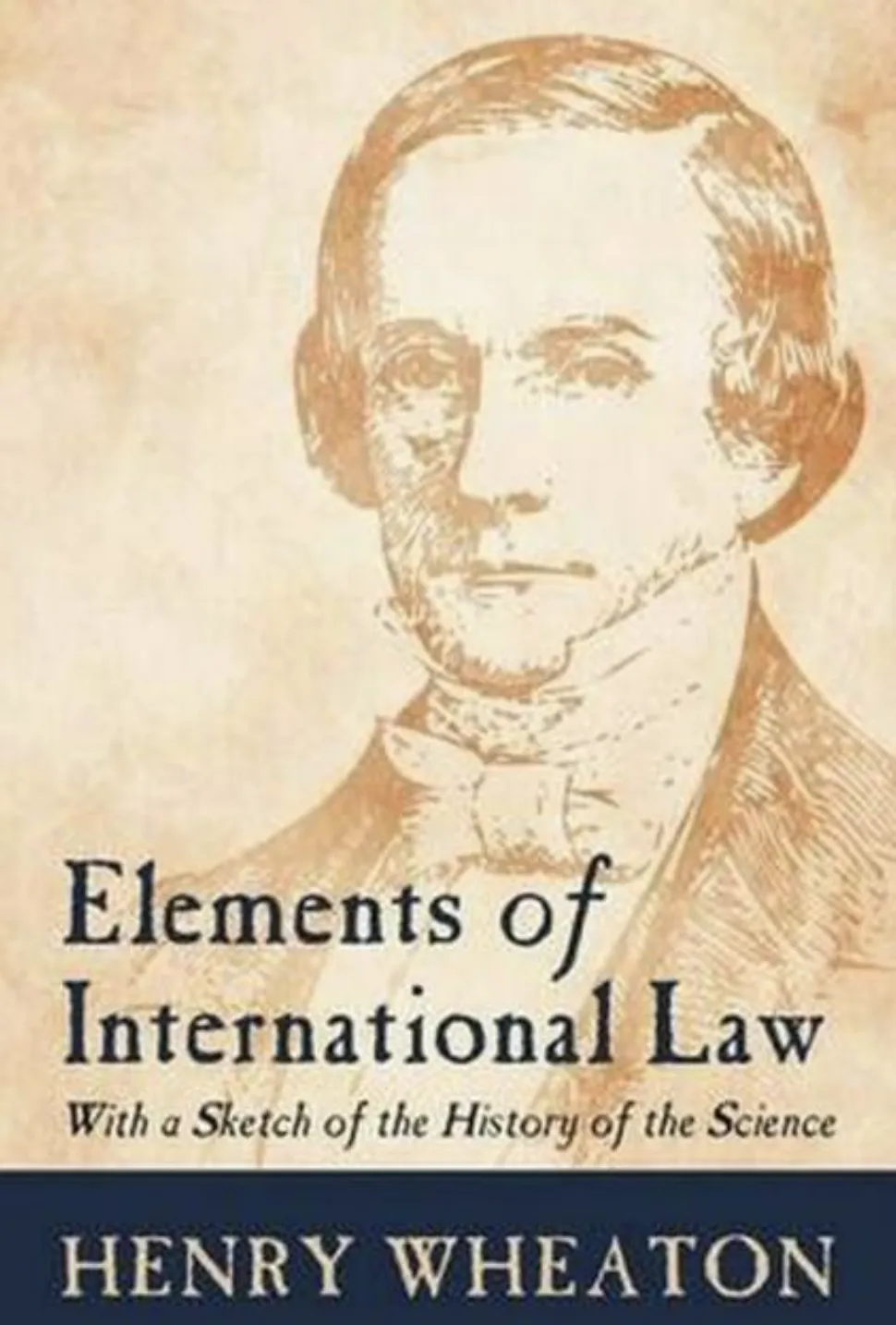
1800's
1801 - Diplomatic relations were established on October 12, 1801, when the Danish Minister Resident to the United States presented his credentials to the U.S. government. Denmark and the United States have never experienced an interruption in their diplomatic relations since they were first established in 1801.
1827 - The U.S. Legation at Copenhagen was established on September 20, 1827, when Chargé d’Affaires Henry Wheaton presented his credentials to the Danish government.
1836 - March 6. Danish immigrant Charles Zanco dies in battle at the Alamo. Zanco is thought to have helped in the design which became the Texas flag, and originated the idea of the “lone star”.
1839 - Danish immigrant Peter Lassen leads an expedition from Missouri to California. Lassen National Forest, Lassen Peak, and Lassen Volcanic National Park are named in his honor.
1840 - Earliest Danish settlers arrive during the 1840's in Wisconsin areas of Racine, Neenah and New Denmark as well as Minnesota and Chicago, Illinois.
1848 - Denmark, Wisconsin is settled by the first Danish immigrants to the area, Niels Gotfredsen and his wife.
1848 - The emancipation of the enslaved in the Danish West Indies. Denmark was the first nation that prohibited transatlantic slave transport, in 1803. But Denmark was far from the first to abolish slavery itself. It continued for decades in the Danish colony in the West Indies for those who had already been shipped there and for their children after them.
1850 - Mormon missionaries from Utah arrive in Denmark following the new 1849 Danish constitution providing freedom of religion. Between 1850 and 1904 approximately 17,000 Danes convert to the Mormon church and leave Denmark for Utah.
1860 - Elk Horn, Iowa the first Danish settlers arrive during the 1860s. In the following 10-15 years, a post office, churches, a Danish folk school and businesses were established. The town was incorporated in 1910.
1860 - Danish immigrants settle in the area of South Dakota which would become "Viborg". The area was first settled by Danish migrants in the 1860s, founding a community known as Daneville. With the advent of the railway in 1893, a new settlement closer to the railway was created as Viborg. Viborg was incorporated as a city on August 25, 1903.
1862 - Dania Society organized in Chicago.
1862 - The "Homestead Act" is passed by U.S. Congress giving 160 acres of governments land to any adult who did not own land elsewhere, provided he lives on the land for at least 5 years.
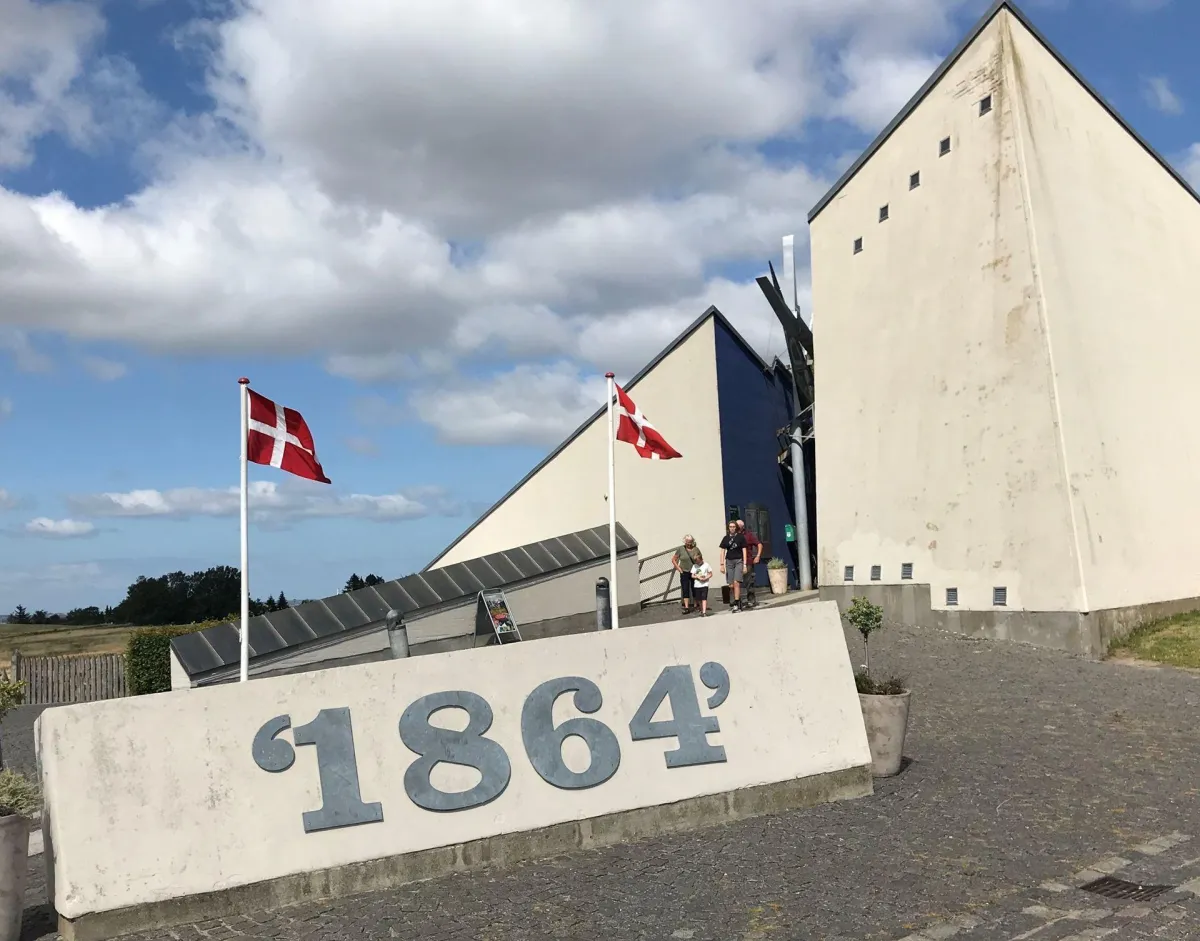
1864-1930 - Greatest wave of Danish immigration to the U.S. following the Danish 1864 border war with Prussia (Germany). However it was primarily economic reasons including the U.S Homestead Act which caused over 300,000 Danes to leave Denmark for the U.S. during this time period.
1868 - In the late 1860's a Danish settlement was established near present day Indianapolis, Indiana. The Trinity Danish Evangelical Lutheran Church was established there in 1868, and the church building was completed in 1872.
1869 - August 1 - The first church service held at the newly constructed Manistee, Michigan Danish Church. It was added to the National Register of Historic Places in 1972, and today is the Old Kirke Museum of Manistee.
1869 - Grundtvigian Danish settlers establish the Kansas colony of Denmark.
1871 - Dannebrog, Nebraska established by Danish settlers led by Lars Hannibal, relocating from Pine Lake, Wisconsin
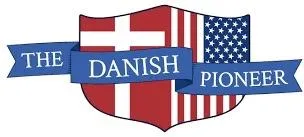
1872 - “Den Danske Pioneer” The Danish Pioneer newspaper founded in Omaha by Mark Hansen. In 1958, the paper was sold and moved to Illinois and Hjalmar Bertelsen served as Editor from 1958 until 1981. In 1997, Queen Margrethe II made then-editor Chris Steffensen a Knight of the Order of Dannebrog to commemorate the newspaper's 125th anniversary. Today the newspaper is a unit of Bertelsen Publishing Co., based in Hoffman Estates, Illinois. Elsa Steffensen, wife of former editor Chris Steffensen, is publisher, and their daughter Linda Steffensen is editor.
1872 - Danish pioneers established the first Danish community in Canada - New Denmark in New Brunswick.
1876 - The "United States Club" is formed in Copenhagen by Danes who emigrated to the U.S., but returned to Denmark.
1876 - Six Danish Americans are included in the casualties of "Custer's Last Stand" - the Battle of Little Big Horn.
1878 - Danish Priest Rasmus Andersen holds his first worship service in Brooklyn, New York. Present was noted Danish journalist and photographer Jacob A. Riis, who was to prove invaluable support for the Seamen's Church and a friend for Rasmus. This service marks the beginning of the Danish Seamen's Church in New York as we know it today. In 1958, the Seamen's Church moved to its current address on 102 Willow Street in Brooklyn Heights.
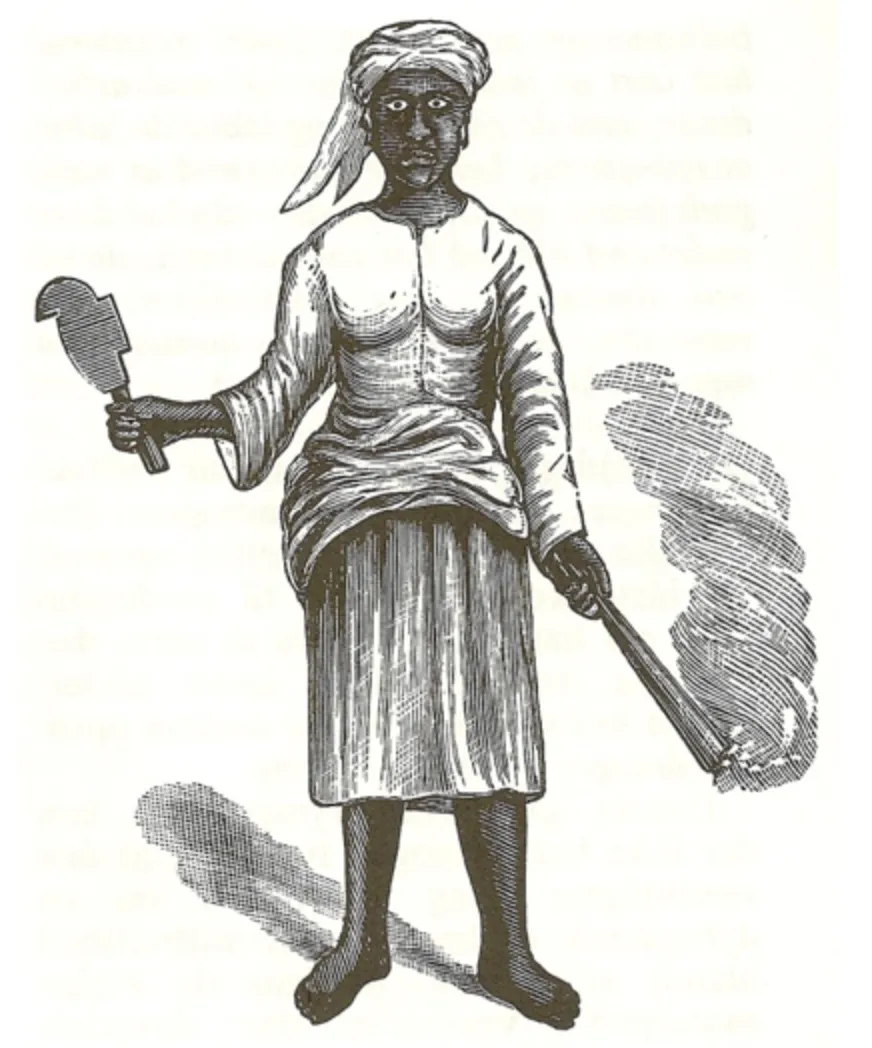
1878 - Fireburn of 1878 - Even after the abolition of slavery in 1848 in the Danish West Indies, conditions for the newly freed were difficult. The Emancipation Revolt of 1848 ended slavery but inaugurated a 30-year period of serfdom based on contract labor that ensured continuing control by plantation owners. Frustration and unrest spilled over in the labor force into a violent rebellion which started on October 1, 1878 (Contract Day) in Frederiksted. Houses, warehouses, and plantations were burned, along with over half of the city of Frederiksted. This revolt became known as Fireburn or the Great Trashing. Three (some believe four or even five) women, Mary, Agnes, and Mathilda, were especially active in the rebellion. Today, they are considered heroines in the islands and called Queens of Fireburn.
1879 - Danish owned shipping company "Thingvalla Line" is founded. Danes now have a transatlantic voyage option to New York directly from Copenhagen. But many still travel to America on German and English ships. By the 1870's, the transition from sail to steamships was nearly complete, cutting the travel time from 6-8 weeks to 10-14 days.
1879 - At a meeting of Danish men in Oakland, California the "Danish Society" was formed. It would later become the Danish Society of Dania of California - Nevada. The purpose was to preserve the Danish Language and Danish customs, to provide sick and funeral benefits, and assist members in finding employment.
1880 - The first wave of Danish migration to the Pacific Northwest areas of Washington and Oregon and the Puget Sound in the 1880's and 90's.
1880 - In the early 1880s, Danish settlers establish the northern Iowa community of "Ringsted". The St. Ansgar Lutheran Church is established by the settlement's founders in 1882. The town of Ringsted is platted in 1899.
1882 - “Bien” The Bee Weekly Danish American newspaper is established in California. Publication ceased in 2018.
1882 - 11,618 Danes emigrate to the U.S. which is the highest number for a single year.
1882 - Danish Brotherhood in America founded. In 1881 Mark Hansen formed the Danish Arms Brothers, a group of Danish veterans who had fought in the American Civil War or the Danish-Prussian War, in Omaha, Nebraska. Other societies sprang up in Illinois, Iowa and Wisconsin. In January 1882, five of these societies met in a convention in Omaha and decided to form an ethnic fraternal order that would offer benefits to its members as well as preserving Danish culture and traditions.
1883 - The Danish Sisterhood of America was founded on December 1, 1883 by Christine Hemmingsen, a Danish immigrant from Orup, Denmark. Inspired by the success of the Danish Brotherhood of America, Mrs. Hemmingsen established Christine Lodge #1 in Negaunee, Michigan.
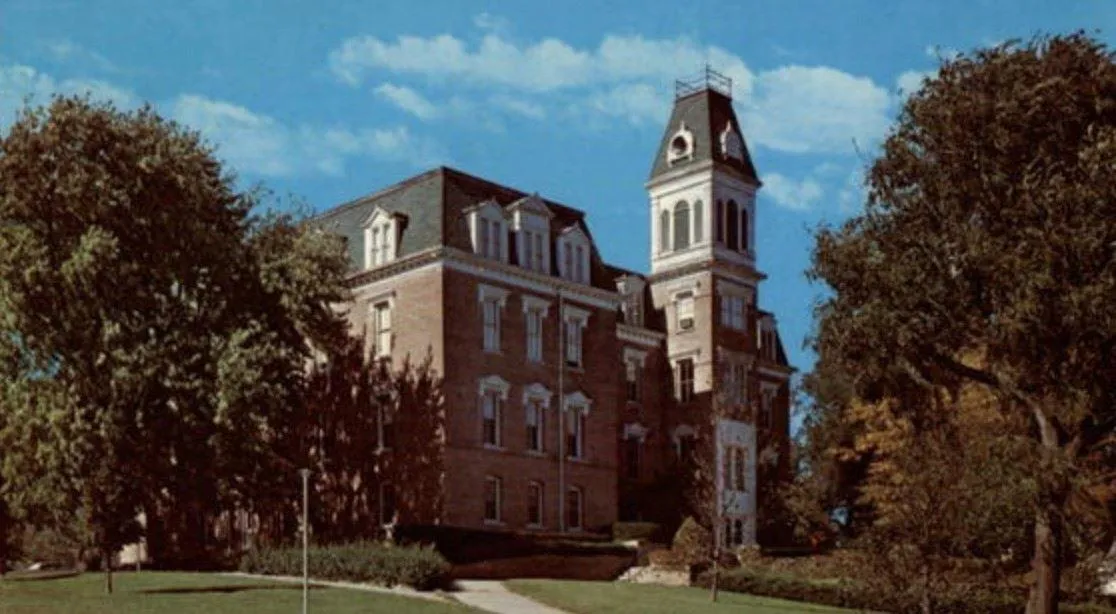
1884 - Trinity Seminary (which would become Dana College) founded in Blair, Nebraska in 1884 as established by the newly founded Danish Evangelical Church Association. A.M. Andersen was the pastor in Blair and became the first president and professor. Classes were held in the house in Blair on the NW corner of Park and 21st street that still stands.
Shortly after this, college (academy) classes were also offered to meet the requirements of support from Blair residents - for a time, known as Blair College. The name Dana College was used after the Elk Horn (Iowa) Folk High School (founded in 1878) was merged after the Danish Church split in 1894 and the United Danish Evangelical Church was founded in 1896.
1885 - Danish Colony of Danebod established near Tyler, Minnesota
1887 - A Danish Church seminary, based on the theology of N.F.S. Grundtvig, is established in West Denmark, Wisconsin.
1887 - The Dansk Folkesamfund (Danish Peoples Society) was founded in 1887 by Frederik Lange Grundtvig, the son of N. F. S. Grundtvig, to conserve Danish social heritage and promote immigration to the USA.
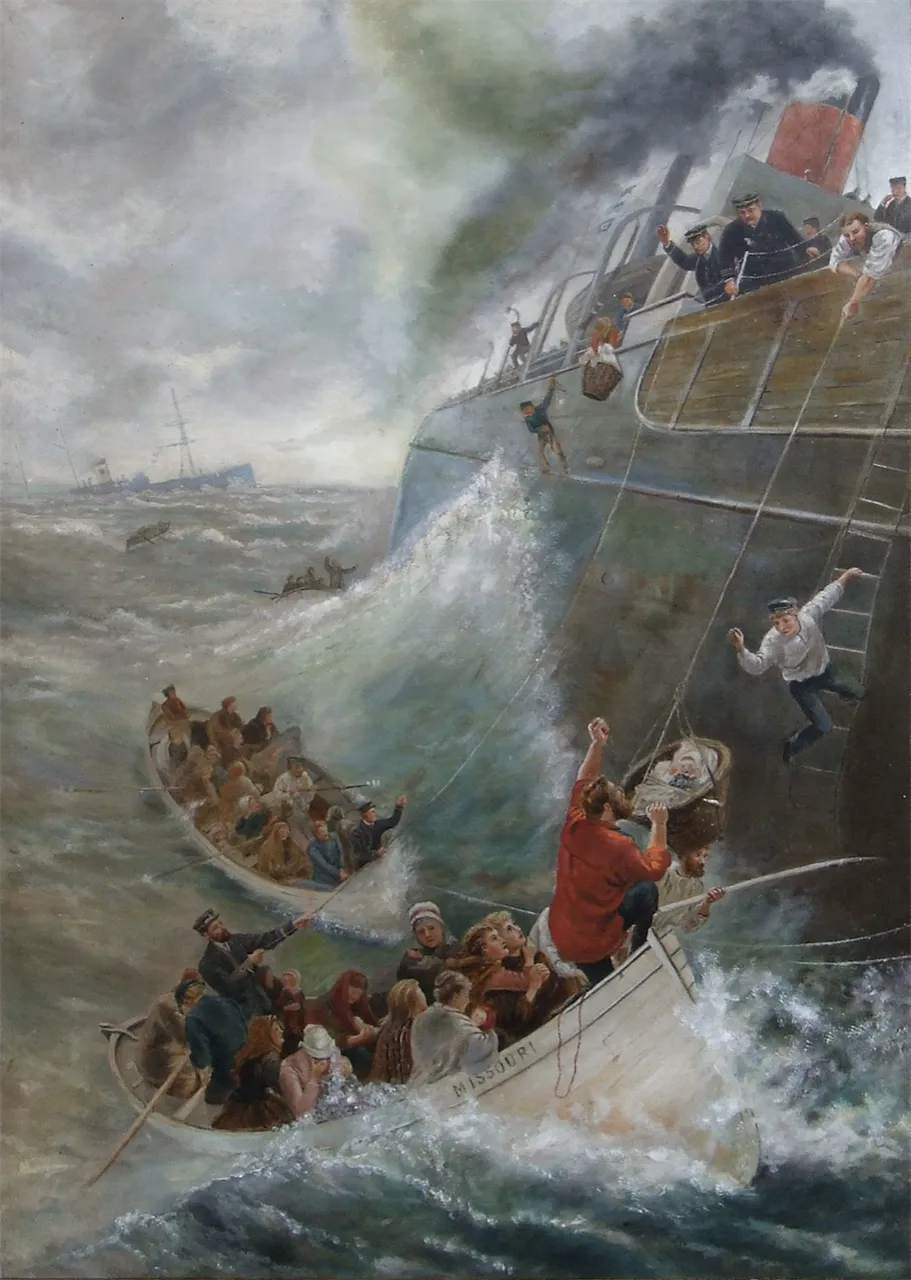
1888 - In the early morning hours of August 14, 1888, 105 lives were lost when two ships of the Danish owned Thingvalla Lines collided about 40 miles off Sable Island, east of Halifax, Nova Scotia. The S/S Geiser sunk within minutes, and the S/S Thingvalla, badly damaged, limped into port carrying survivors.
1889 - On April 6, 1889, the S/S Danmark bound for New York and carrying 735 passengers, sank in the Atlantic Ocean. All the passengers and crew were rescued by the S/S Missouri.
1891 - Danish Home of Chicago established.
1892 - Beautiful Victorian Style home is built by Danish immigrant and cattle rancher Niels Petersen near Tempe, Arizona. Today, the "Petersen House Museum" is owned and operated by the city of Tempe.
1893 - Danish Lutheran Publishing House established in Racine, Wisconsin, but operations took place in Blair, Nebraska until closing in 1960.
1893 - After completion of a railroad line between Sioux Falls and Yankton, a group of Danish immigrants living around the town of Daneville establish the new town of Viborg, South Dakota located along the new railroad.
1894 - Approximately 100 Danish families establish community of Danevang, Texas
1896 - United Danish Evangelical Lutheran Church synod founded (based on "Inner Mission" theology). The newly established Trinity Seminary in Blair, NE (later to become Dana College) became the synod's theological training school. Elk Horn, Iowa Pastor P.S. Vig was named Seminary President, and Pastor G.B. Christiansen was named Synod President. Theology classes, taught by Pastor Vig, were held in Elk Horn the first year, before moving to Blair.
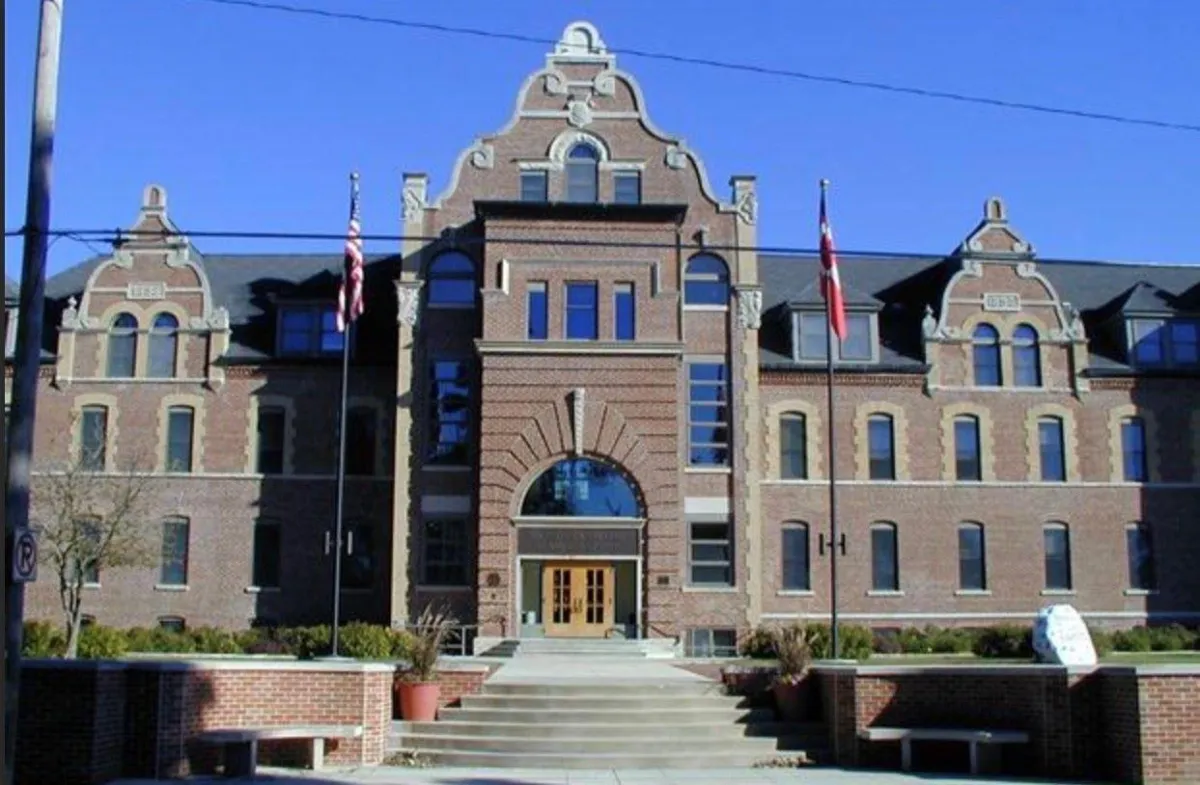
1896 - Grand View College and Seminary established in Des Moines, Iowa by Danish immigrants. Grand View College and Seminary was started in 1896 by members of the Danish Evangelical Lutheran Church in America (N.F.S. Grundtvig theology). In 1912, Grand View opened a high school academy department; instruction at the junior college level began in 1924 and was accredited by the Iowa State Department of Public Instruction in 1938 following the dissolution of the academy. After receiving accreditation by the North Central Association of Colleges and Secondary Schools in 1959, the theological seminary was relocated to Maywood, Illinois, in 1960. In 1975, nursing programs were added for the first time along with baccalaureate programs. The college, then known as Grand View Junior College, became known as Grand View College. In 2008, after adding graduate programs, the college renamed itself Grand View University. The Grand View Danish Immigrant Archives houses a wide variety of information sources related to the Danish immigrant influence on the United States, including personal histories, photographs, writings, and a large collection of Danish American newspapers and magazines.
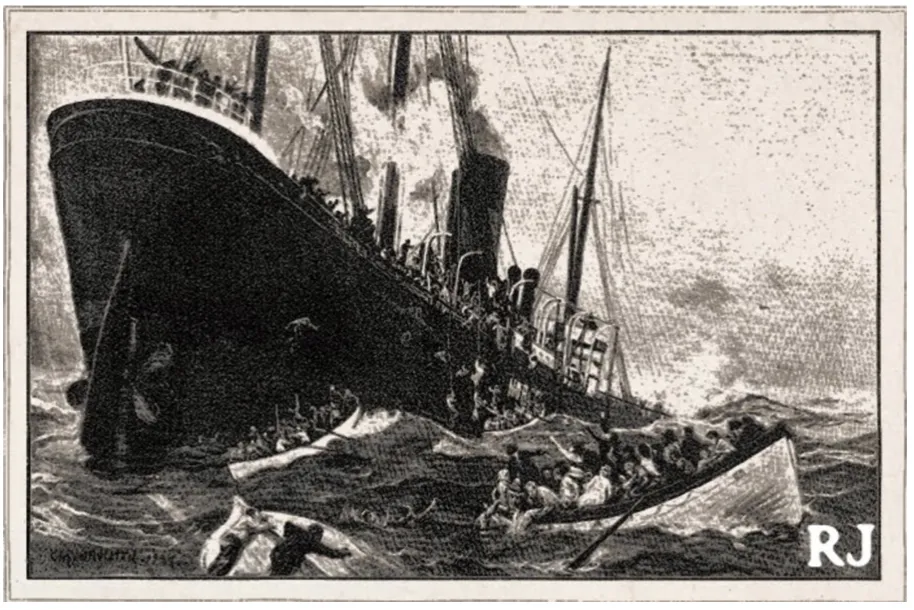
1900's
1900 - 1900 census shows over 10,000 first generation Danes living in Chicago, approximately 5,600 in New York City, 2,800 in Racine, Wisconsin, 2,700 in St. Paul/Minneapolis, and 2,400 in Omaha.
1903 - Andersen Lumber Company founded by Danish immigrant Hans Jacob Andersen and his family at Hudson, Wisconsin. In 1929, the name of the firm was changed to Andersen Frame Company, and again in 1937 to Andersen Corporation. Originally, Andersen Lumber Company was based in Hudson, Wisconsin, where logs arrived at their location via the St. Croix River. In 1908, Hans Andersen sold the lumberyards to devote all the company's efforts to the window frame business. Needing room for expansion, Andersen built a factory in 1913 in South Stillwater (now Bayport, Minnesota). In 1914, Fred C. Andersen became president. In 1916, Andersen resumed operating the lumber business. Renewal By Andersen was formed in 1995.
1904 - June 28, the SS Norge, sailing from Copenhagen to New York sinks in the North Atlantic, west of Scotland. Carrying emigrants from Denmark, Norway, Sweden, Russia and Poland, 627 passengers and crew perish, making it Denmark's worst ever maritime disaster.
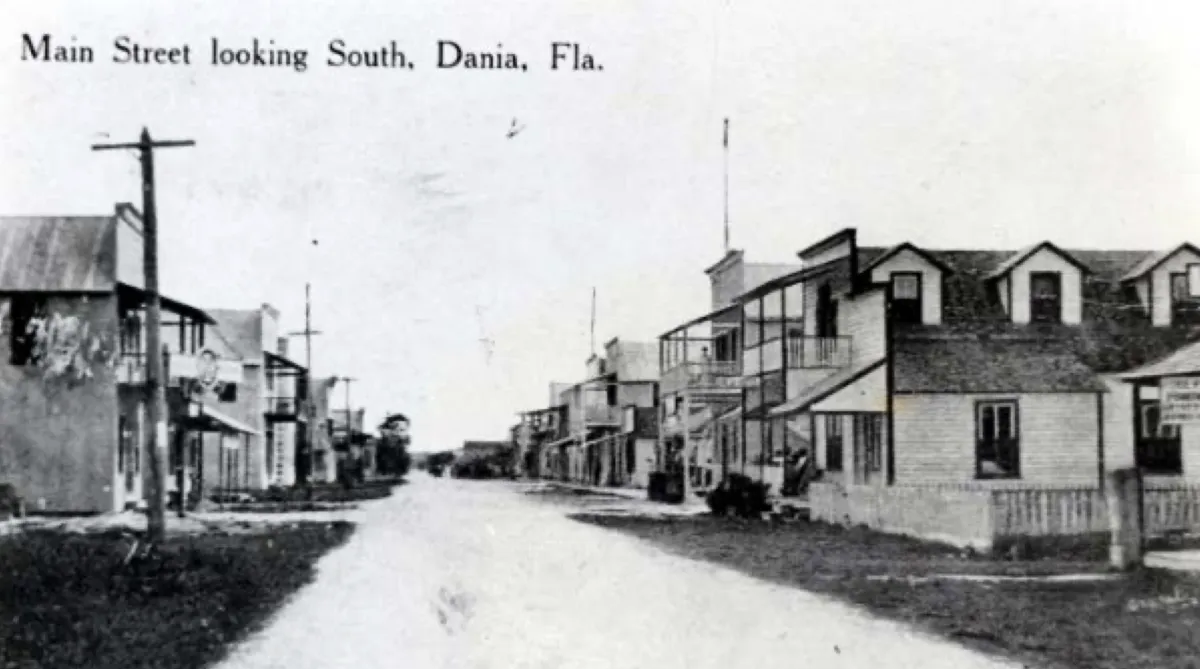
1904 - Southern Florida community of "Dania" incorporated. In 1998 the name was changed to "Dania Beach". Most of the community's first residents were Danish settlers.
1906 - The Danish Home for the Aged in Brooklyn, NY opens. Present at the opening celebration was Jacob Riis, renowned Danish American author and photographer. The present-day Danish Home facility is a historic former estate at Croton-On-Hudson, New York. The home ceased operations and closed on December 31, 2020.
1906 - The first Danish Lutheran churches are established in California - Den Første Danske Evangelisk Luthersk Kirke i Los Angeles, and St. Ansgar Danish Evangelical Lutheran Church in San Francisco.
1906 - Settlement of Dagmar, Montana established by Danish immigrants.
1908 - Estimated 500 Danes per year return to Denmark from America, many disillusioned, between 1908 and 1914.
1909 - Minnesota community of "Askov" established by Danish settlers.
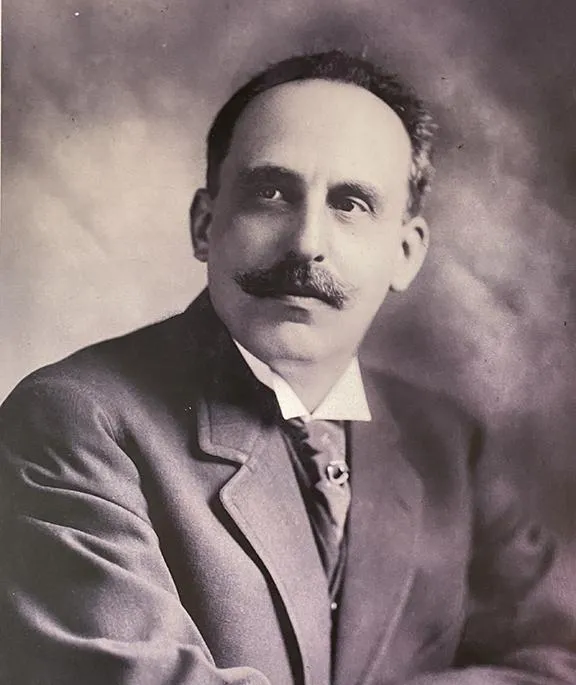
1909 - July 4, Max Henius is the driving force behind the first July 4th celebration of Danish American friendship at the Aarhus Expo. The expo actually ran from May to October with approximately 667,000 visitors. Over the next three years, Henius leads an effort to purchase land at Rebild Bakker, presents the deed to King Christian X, and the annual July 4 Rebild Festival is born in 1912. Henius was also influential in the re-establishment of the Danish-German border as he successfully lobbies President Woodrow Wilson to include a referendum proposal in the final Treaty of Versailles in 1919. Slesvig area residents were then allowed to vote for the re-establishment of the border in 1919, with the formal reunification on June 15, 1920.
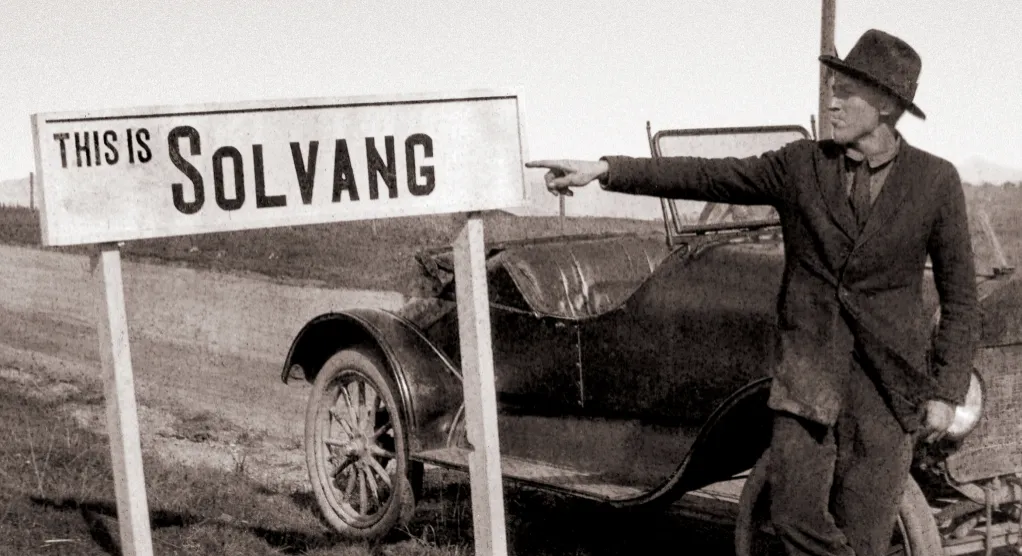
1911 - Solvang, California founded by Danish settlers. In 1906, Danish Lutheran pastor and Grand View College President Benedict Nordentoft, together with Jens M. Gregersen, a pastor from Kimballton, Iowa, and Peder P. Hornsyld, a lecturer at Grand View, had discussed the possibility of creating a new Danish colony with a dedicated Lutheran church and school on the west coast. In 1910, together with other Danish-Americans, they created the Danish-American Colony Company in San Francisco. Later that year, suitable land was found in the Santa Ynez Valley northwest of Santa Barbara. On January 12, 1911, the land purchase was completed.
1911 - American Scandinavian Foundation (ASF) established in New York by Danish American industrialist Niels Poulson. In 2000, ASF opened Scandinavia House in New York.
1912 - Rebild National Park Society established by Danish immigrant Max Henius in Chicago, Illinois. Celebration each July 4 in the Rebild Hills near Aalborg, Denmark to recognize the friendship between Denmark and the United States.
1914 - Elverhoj Art Colony (1914-1939) founded in Milton, New York
1914 - Danish Home North East established - Danish Brotherhood and Sisterhood Lodges established the home for their aged members. In 1951 a new home was built in Edison, New Jersey and is today home of DANE (Danish Archive North East), and is a Danish cultural center and meeting place.
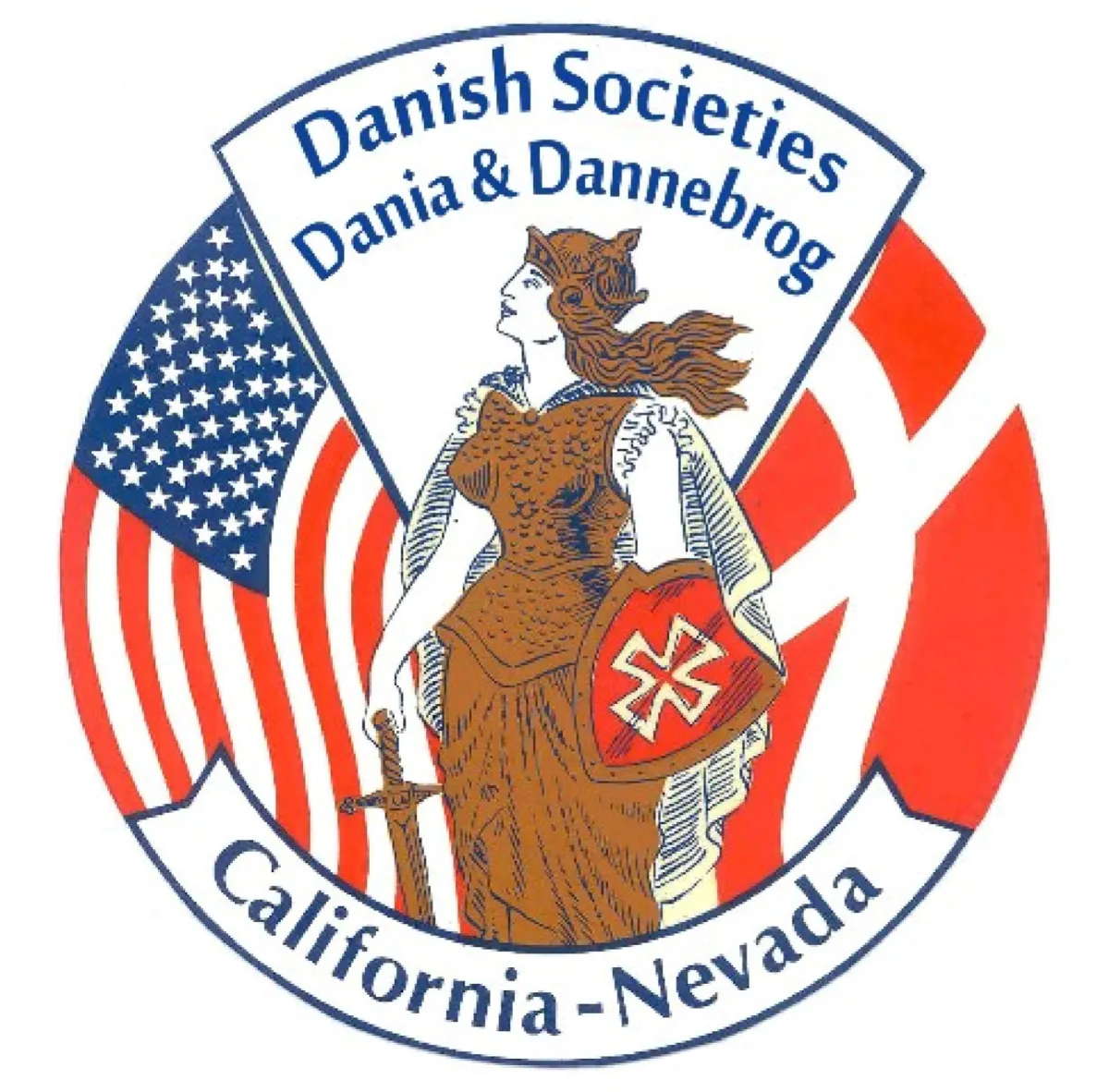
1914 - In the California Bay Area, wives of the members of the Dania Society meet to form a women's organization to bring "cheer and comfort to Danes in distress" and also support the Dania Society. They form the Grand Lodge Dannebrog. Together today, the two organizations are known as the Danish Societies Dania & Dannebrog of California and Nevada.
1914 - After emigrating from the Danish island of Langeland, brothers Tom and Carl Knudsen establish a dairy consulting business "Knudsen Laboratories" in Los Angeles. Ten years later, the brothers would divide their business, and Tom would establish "Knudsen Creamery" which would become one of the largest supplier of dairy products in California and the United States. In subsequent years Tom and his wife Valley would generously support Danish American organizations in Southern California and especially the Danish Lutheran Church and Cultural Center in Yorba Linda.
1914-1918 - World War I - Approximately 30,000 Danes and Danish Americans serve in World War I. Most served in the U.S. Army and Navy. Danes who lived in the Slesvig region, which had been annexed by Germany following the war of 1864, were forced to serve in the German army. Over 4,000 Schleswigers died while serving for Germany in WWI. - Bjarne Bendtsen, Denmark
1917 - Denmark sells the Danish West Indies (now the U.S. Virgin Islands) to the United States for $25 million.
1922 - Danish American Athletic Club (DAAC) organized in Chicago on April 18, "to promote sport and physical culture among the Danish young people of Chicago or descent of said nationality" and their affiliation with "the AAU, Illinois Soccer Football Association & District League, and the Danish National Committee of Chicago". The first President was Laurits Madsen.
1923 - Northwest Danish Association established. Beginning as an elderly care home, the Northwest Danish Association now provides active cultural centers, lending libraries, public programs and services for the Northwest in both Portland, Oregon and Seattle, Washington.
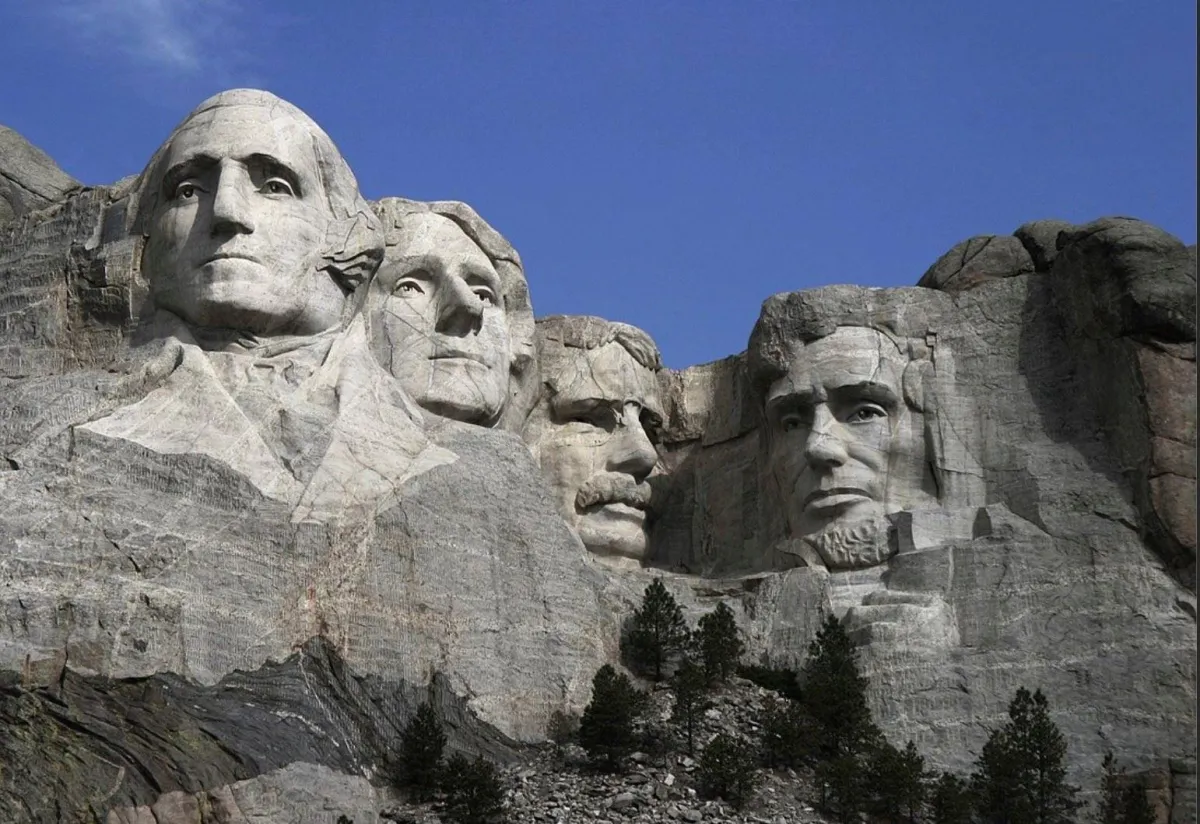
1927 - Sculptor Gutzon Borglum, the son of Danish immigrants, begins creation of Mount Rushmore in South Dakota. In 1927 Borglum was commissioned by the state of South Dakota to turn Mount Rushmore, in the Black Hills, into a colossal monument. That year he began sculpting the 60-foot-high heads of George Washington, Thomas Jefferson, Abraham Lincoln, and Theodore Roosevelt on the face of the mountain, and in 1929 the United States government began financing the project, which would become a national memorial. Borglum brought all his engineering prowess to bear on this project, and he invented new methods that took advantage of the capacity of dynamite and pneumatic hammers to carve large quantities of stone quickly. Washington’s head was unveiled in 1930, Jefferson’s in 1936, Lincoln’s in 1937, and Roosevelt’s in 1939. The work was completed in 1941, the year of Borglum’s death, although the last details were completed by his son, Lincoln Borglum.
1932 - Inspired by Danish Folk schools, Highlander Folk School is established in Tennessee. The school hosted desegregation workshops in the 1950s which were attended by civil rights activist Rosa Parks.
1934 - In 1934, a fraternal group called the Danish Venneforening opened a 21-acre picnic spot in Florence (North Omaha, Nebraska) with a massive dance floor and a crowd of 20,000 people on July 4th. A 20-acre park covered in woods, it is known as Vennelyst Park. The Vennelyst was a horticultural society started in Denmark in the 1890s.
1934 - Los Angeles Naver Club founded in downtown LA. Starting in the 1950’s meetings were held the second Friday of the month at their new Club house “Hulen”, on a 3-acre property donated by Bill Omer (616 Norumbega Dr. in the foothills of Monrovia, CA) a few miles east of Pasadena. It remains there today, and is a primary meeting place for Southern California Danish American organizations. The "Navers" is a European organization for well-traveled journeymen from many different trade groups in Scandinavia and Europe, founded in Switzerland in 1899.
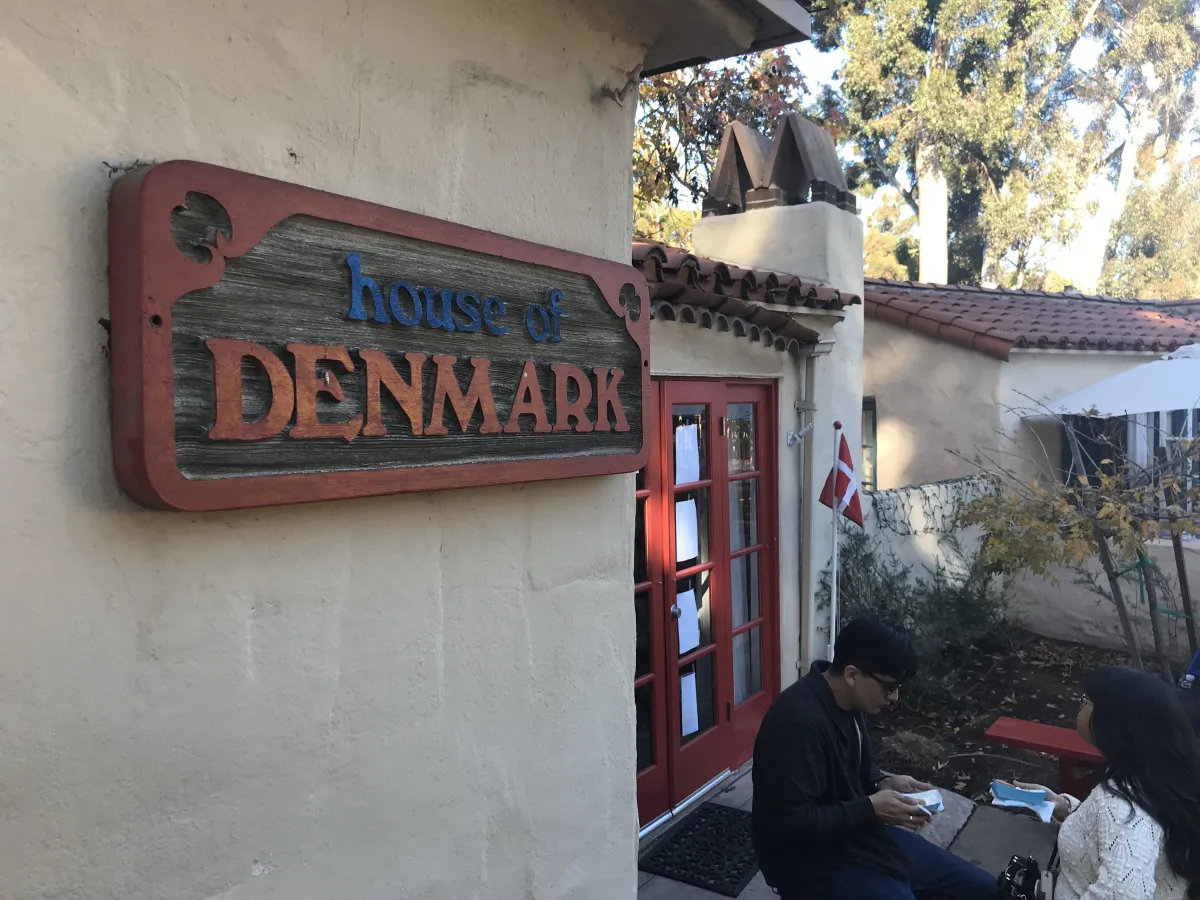
1935 - The “House of Denmark” built in Balboa Park, San Diego for the California Pacific International Exposition. It is now home of the “House of Denmark” Danish Club of San Diego.
1936 - The Oersted Medal is named for Hans Christian Oersted (Ørsted) (1777-1851), a Danish physicist who, in the course of creating a demonstration for teaching his class, discovered that electric currents cause a magnetic field. The award is now presented each year by the American Association of Physics Teachers.
1940 - April 9, Denmark is invaded by Germany, beginning the German occupation of Denmark for the duration of WWII.
1945 - May 5, Denmark is liberated from German occupation at the close of WWII.
1951 - Construction of a United States Air Force base in northern Greenland begins. "Thule Air Base" is completed in 1953.
1964 - St. Croix Friends of Denmark founded by a group of community-minded local citizens who recognized the rich heritage of Danish rule on our islands (1733-1917). Because of the enduring affection of Denmark for her former colonies, and mirroring sentiments on this end, it seemed appropriate and natural to establish a social organization in the Virgin Islands to reaffirm the cultural and emotional bonds between Denmark and her former Danish West Indies.
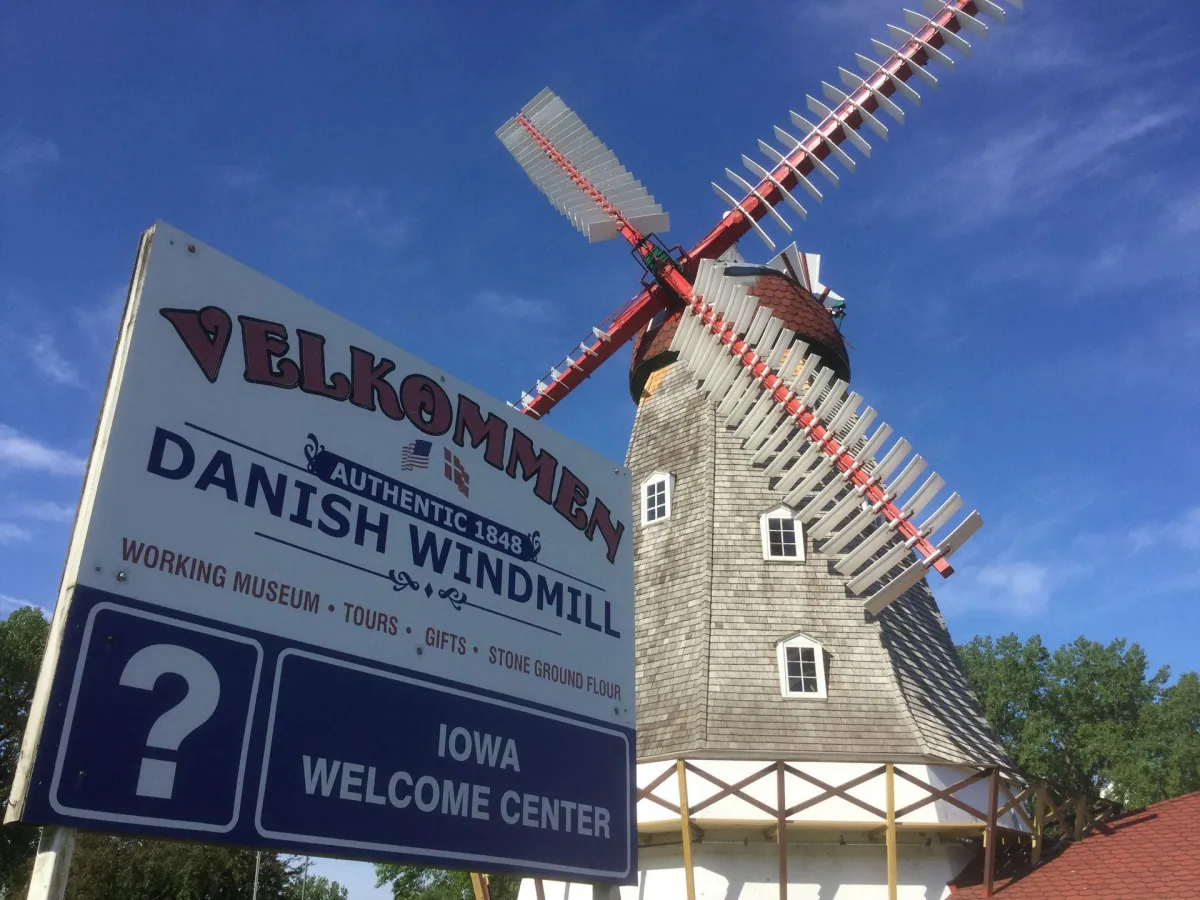
1976 - Authentic 60’ Danish windmill originally built in 1848 in Nørre Snede, Denmark is purchased by the town of Elk Horn, Iowa. It is dissembled and shipped to Elk Horn where it is reassembled and becomes a Danish American landmark. The Danish Windmill Complex in Elk Horn is now an Iowa Welcome Center and Danish gift shop.
1977 - Danish American Heritage Society established to promote an interest in Danish culture, heritage, and language and to encourage research in the life, culture, and history of Danish Americans. The society also publishes a journal, The Bridge.
1980 - Nordic Heritage Museum established in Seattle, Washington (will become National Nordic Museum in 2018)
1983 - Danish Immigrant Museum established in Elk Horn, Iowa. In 1994 a new museum facility was completed which is the current location. In 2013 the name was changed to The Museum of Danish America.
1986 - Danish Immigrant Archive established at Dana College, Blair, Nebraska. After the closing of Dana College in 2010, the archives were moved to a new location in Blair and renamed The Danish American Archive and Library.
1988 - Elverhøj Museum of History and Art opens in Solvang, California.
1991 - Danish Home of Chicago observes 100 years of operation.
1993 - Construction of new Danish Lutheran Church and Cultural Center in Yorba Linda, California. The Tom and Valley Knudsen Cultural Center, a reception hall connected to the church, is a primary meeting place for many Danish American clubs and events in Southern California.
1993 - Danish Heritage Museum of Danevang, Texas established.
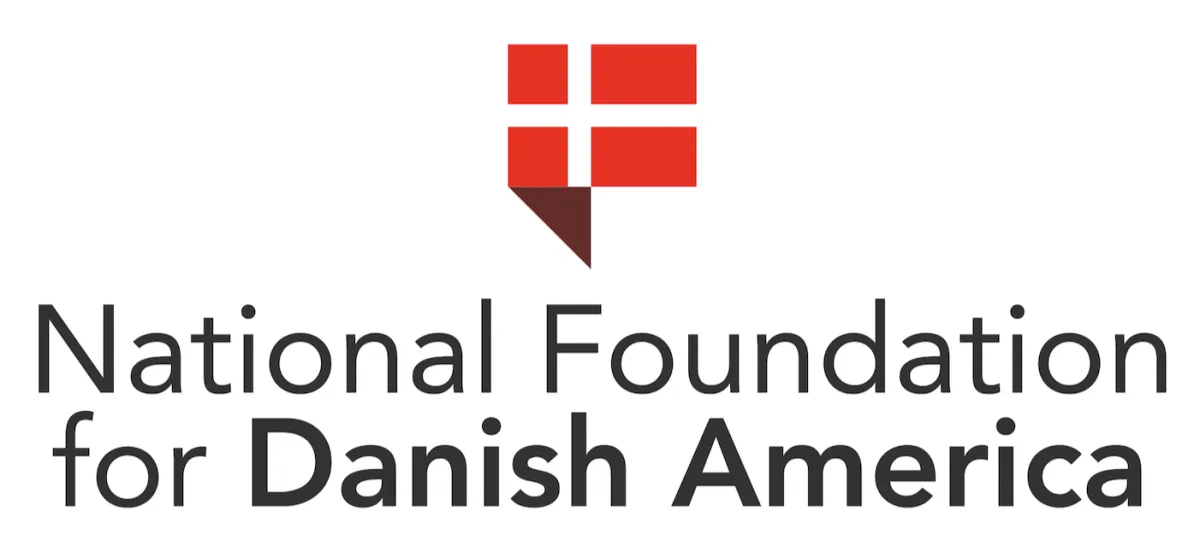
2000's
2010 - Following years of financial and enrollment struggles, Dana College, Blair, Nebraska ceases operations.
2012 - 100th anniversary of Rebild National Park Society celebrated on July 4 in Rebild Hills, Denmark near Aalborg with Queen Margrethe II in attendance.
2018 - National Nordic Museum - Seattle, Washington opens new museum facility in Ballard area of Seattle. Denmark Crown Princess Mary attends ribbon cutting. In 2019 the museum was granted National status by proclamation and renamed the National Nordic Museum.
2019 - The National Foundation for Danish America was founded.
2020 - Global coronavirus pandemic causes cancellation and postponement of nearly all Danish American gatherings, events and festivals and forces development of many online "virtual" events, museum exhibits, and meetings.
- Visit Our Online Community (coming soon)
© 2025 National Foundation for Danish America. All rights reserved.
